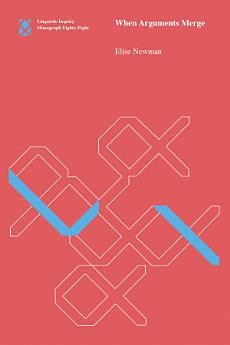When Arguments Merge
Elise Newman
অক্টো ২০২৪ · Linguistic Inquiry Monographs বই 88 · MIT Press
ই-বুক
230
পৃষ্ঠা
family_home
উপযুক্ত
info
reportরেটিং ও রিভিউ যাচাই করা হয়নি আরও জানুন
এই ই-বুকের বিষয়ে
A novel theory of argument structure based on the order in which verbs and their arguments combine across a variety of languages and language families.
Merge is the structure-building operation in Chomsky’s Minimalist Program. In When Arguments Merge, Elise Newman develops a new Merge-based theory of the syntax of argument structure, taking inspiration from wh- questions. She uncovers new connections between disparate empirical phenomena and provides a unified analysis of patterns across many languages and language families, from Mayan to Bantu to Indo-European languages (among others). The result is a syntactic theory with a small inventory of features and categories that can combine in a limited number of ways, capturing the range of argument configurations that we find cross-linguistically in both declarative and interrogative contexts.
Newman’s novel approach to argument structure is based on the time at which different kinds of arguments merge and move in the verbal domain. Assuming that all kinds of Merge are driven by features, she proposes that subset relationships between elements bearing different sets of features can constrain the distribution of arguments in unexpected ways and that different feature bundles can predict unusual interactions between arguments in many contexts. The positions of arguments in different contexts have consequences for agreement alignment and case assignment, which are reflected in the Voice of the clause. Examining the order in which verbs and their arguments are combined, she explores the consequences of different orders of combination for the kinds of utterances observed across languages.
Merge is the structure-building operation in Chomsky’s Minimalist Program. In When Arguments Merge, Elise Newman develops a new Merge-based theory of the syntax of argument structure, taking inspiration from wh- questions. She uncovers new connections between disparate empirical phenomena and provides a unified analysis of patterns across many languages and language families, from Mayan to Bantu to Indo-European languages (among others). The result is a syntactic theory with a small inventory of features and categories that can combine in a limited number of ways, capturing the range of argument configurations that we find cross-linguistically in both declarative and interrogative contexts.
Newman’s novel approach to argument structure is based on the time at which different kinds of arguments merge and move in the verbal domain. Assuming that all kinds of Merge are driven by features, she proposes that subset relationships between elements bearing different sets of features can constrain the distribution of arguments in unexpected ways and that different feature bundles can predict unusual interactions between arguments in many contexts. The positions of arguments in different contexts have consequences for agreement alignment and case assignment, which are reflected in the Voice of the clause. Examining the order in which verbs and their arguments are combined, she explores the consequences of different orders of combination for the kinds of utterances observed across languages.
লেখক সম্পর্কে
Elise Newman is Postdoctoral Associate in the Department of Linguistics and Philosophy at MIT.
ই-বুকে রেটিং দিন
আপনার মতামত জানান।
পঠন তথ্য
স্মার্টফোন এবং ট্যাবলেট
Android এবং iPad/iPhone এর জন্য Google Play বই অ্যাপ ইনস্টল করুন। এটি আপনার অ্যাকাউন্টের সাথে অটোমেটিক সিঙ্ক হয় ও আপনি অনলাইন বা অফলাইন যাই থাকুন না কেন আপনাকে পড়তে দেয়।
ল্যাপটপ ও কম্পিউটার
Google Play থেকে কেনা অডিওবুক আপনি কম্পিউটারের ওয়েব ব্রাউজারে শুনতে পারেন।
eReader এবং অন্যান্য ডিভাইস
Kobo eReaders-এর মতো e-ink ডিভাইসে পড়তে, আপনাকে একটি ফাইল ডাউনলোড ও আপনার ডিভাইসে ট্রান্সফার করতে হবে। ব্যবহারকারীর উদ্দেশ্যে তৈরি সহায়তা কেন্দ্রতে দেওয়া নির্দেশাবলী অনুসরণ করে যেসব eReader-এ ফাইল পড়া যাবে সেখানে ট্রান্সফার করুন।







